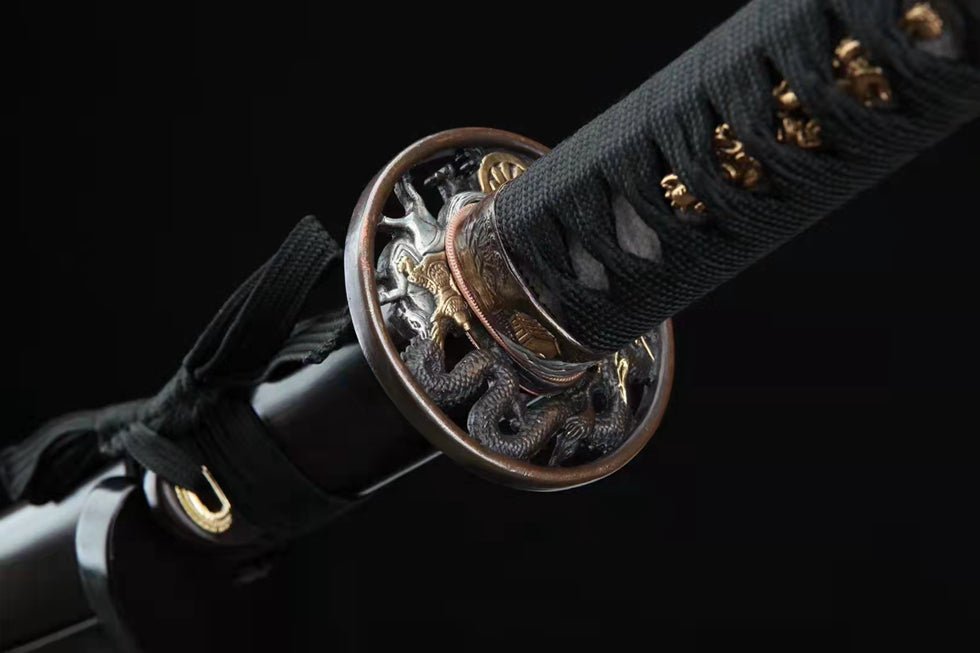The Enchanting Tale of Sanjo Munechika: The Master of Blades
In the heart of Kyoto, where ancient traditions blend seamlessly with the pulse of modern life, the legend of Sanjo Munechika, a master swordsmith, continues to captivate the imaginations of those who hear his story. Known for his exceptional skill and the enchanting tales surrounding his creations, Munechika's legacy is as sharp and enduring as the blades he forged.
The Divine Encounter
Sanjo Munechika lived during the Heian period, a time when Kyoto was the vibrant capital of Japan, teeming with cultural and artistic endeavors. One of the most famous stories about Munechika is the creation of the legendary blade "Kogitsune-maru," or "Little Fox."
According to legend, Munechika was struggling to forge a blade that could meet his exacting standards. One night, while he was praying for divine assistance at the Fushimi Inari Shrine, he encountered a mystical fox spirit. The fox, taking the form of a young boy, offered to help him create the perfect sword. In a trance-like collaboration, Munechika and the fox spirit worked through the night, and by dawn, they had crafted a katana of unparalleled beauty and sharpness.
The blade was named Kogitsune-maru in honor of the fox spirit, and it was said to possess magical properties, bringing good fortune and protection to its wielder. This enchanting tale of divine intervention and craftsmanship has made Kogitsune-maru one of the most celebrated swords in Japanese history.
The Emperor's Commission
Another captivating story of Munechika involves an imperial commission. The Emperor, having heard of Munechika's extraordinary skills, requested a sword that could symbolize the strength and purity of the imperial lineage. Munechika accepted the challenge, knowing that the honor and pressure of such a task were immense.
After months of meticulous work, Munechika presented the Emperor with a sword named "Sanjo-no-Kotetsu." The blade was flawless, with a mirror-like finish and a balance so perfect that it seemed to move as an extension of the wielder's arm. The Emperor was so impressed that he declared Munechika's sword as a treasure of the imperial family, a testament to the unparalleled craftsmanship and dedication of the master swordsmith.
The Cursed Sword
Not all of Munechika's creations were surrounded by positive tales. One story tells of a cursed sword known as "Yasutsuna." Munechika forged Yasutsuna for a powerful warlord who demanded a blade that could guarantee victory in battle. However, the warlord was known for his ruthless and dishonorable tactics, and many believed that such a man should not possess a weapon of Munechika's making.
After the warlord received Yasutsuna, he won many battles, but his victories came at a great personal cost. He was haunted by visions and plagued by nightmares, and his once formidable mind began to unravel. Some say that Munechika, aware of the warlord's cruelty, imbued the sword with a curse to ensure that it would bring misery to its owner. The story of Yasutsuna serves as a cautionary tale about the responsibility that comes with wielding such powerful weapons.
The Legacy of Sanjo Munechika
Today, Sanjo Munechika's swords are considered priceless artifacts, revered not only for their physical perfection but also for the rich stories and cultural significance they carry. Museums and private collectors around the world vie to possess even a single blade crafted by the master, knowing that each one is a piece of living history.
Munechika's legacy endures in the hearts and minds of those who appreciate the art of the sword. His life and work exemplify the perfect blend of skill, spirituality, and storytelling, reminding us that behind every great creation lies a story worth telling.
In the hands of a samurai, a sword is more than a weapon; it is a companion, a protector, and a testament to the enduring spirit of the artisans who forged it. And in every Sanjo Munechika blade, the soul of a master lives on, a timeless reflection of Japan's rich cultural heritage.

